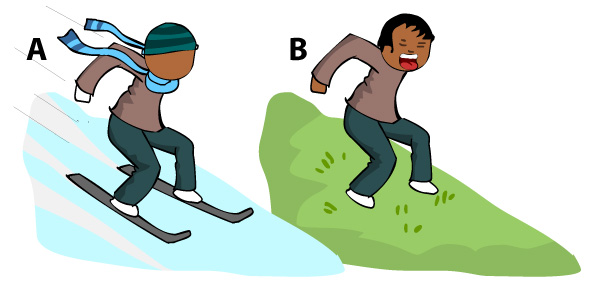- Forces
Frictional forces
Friction is a force that stops things from moving easily.
Whenever an object moves or rubs against another object, it feels frictional forces. These forces act in the opposite direction to the movement. Friction makes it harder for things to move.
In the illustration below, the smooth base of the snowblades slides smoothly on the snow. The boy on the grass is having difficulty sliding because the grass is not smooth and his shoes are getting stuck in the grass. There is more friction between the shoes and the grass than the snow and the snowblades.
Without frictional forces, a moving object may continue moving for a longer period. Frictional forces are usually greater on rough surfaces than on smooth surfaces.
Frictional forces can be good and helpful. For example:
- A basketball star can grip a ball and control it better in a dunk because of greater friction.
- When we walk, we don’t slip easily because of the friction between our shoes and the floor.
- Each time you ride your bike, friction between the tires and the road helps you not to skid off.
Sometimes frictional forces can be unhelpful.
- If you don’t lubricate your bike regularly with oil, the friction in the chain and axles increases. Your bike will be noisy and difficult to pedal.
